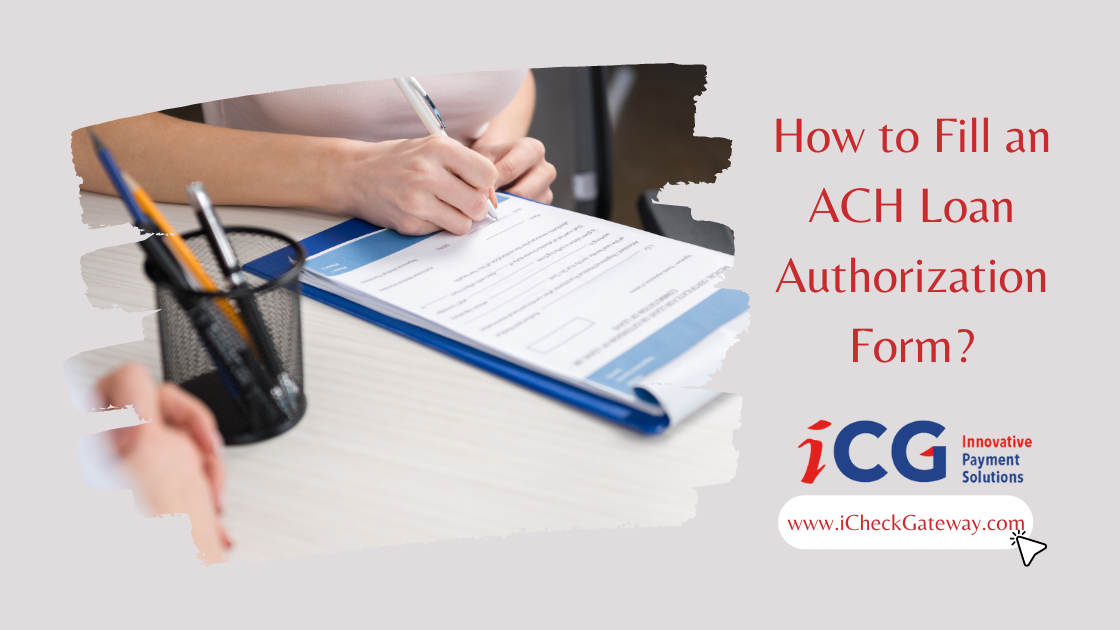Please download the ACH loan authorization form here and fill it out so that we can process your payment correctly.
There’s a good chance you encounter a similar message while trying to process a payment through ACH technology. If you are confused by this message and don’t know what to do next, we’re here to help! Today, we will discuss the importance of these forms and how to fill them correctly so that your ACH payments go through without a hitch!
What is an ACH Authorization Form?
Nacha (National Automated Clearinghouse Association), the governing body for ACH payments in the U.S., has a list of strict rules and regulations for processing payments. They regularly update the network and the technology to provide a seamless customer experience and prevent fraud. The ACH authorization form is a crucial security checkpoint installed by Nacha to minimize fraud and settle money transfer disputes effectively. Stay up to date with the latest Nacha rules!
These forms essentially collect the following details to process the ACH transfer:
- Bank account details for the sender
- Bank account details for the receiver
- Type of transfer (single or recurring)
- Authorization details
- Cancellation details (if any)
- Disclaimer statements
The details collected may vary slightly depending on the type of form that we are talking about.
- With an ACH loan authorization form, you give the bank (which initially lent you the money) permission to collect the EMI (Equated Monthly Installment) directly from your registered bank account. This form is usually a part of your loan documentation process. The lender bank will ask you to fill out this form before even disbursing the loaned amount.
- The receiver usually signs the ACH direct payment authorization form when dealing with an individual or a company instead of a financial institution. This is commonly a one-time payment, but depending on the status of the agreement, it can authorize a recurring payment schedule, too.
It is a good idea to rely on a Nacha-preferred partner to automate and process all your payments seamlessly.
The Basic Components of an Authorization Form
Now that we know the importance of ACH loan authorization forms, let’s discuss their core components to ensure that you fill the form correctly.
For this use case, we will consider that someone (an individual or a financial institution) lent you money, and you are authorizing ACH payments to repay the loan on a set schedule.
Part 1: Transfer to
This section contains the bank account details of the lender. Here, you must enter the account details of the institution/individual who lent you the money.
Note: The account that the institution/individual uses to receive the money may not be the same through which they transferred the money initially. So, make sure you enter these details correctly.
Part 2: Transfer from
This section contains the details of the account through which you will make the payment.
Note: Make sure that you always have enough balance in this account to honor your upcoming payments. You may be slapped with a fine or a return code if you don’t have enough balance.
Part 3: Payment Information
Important details about the payment go here. This section usually has checkboxes that signify the type of payment; single or recurring payments.
Part 4: Authorization and Signatures
Your signature and authorization go onto this section. If you are transferring funds through a joint bank account, make sure that you and the other account holder sign in the designated areas.
Part 5: Bank Copy
The final part of the authorization form is only for bank use. Do not write anything here.
Learn more about ACH and credit card payment solutions.
5 Tips on How to Fill an ACH Direct Payment Authorization Form
Here are some great tips that you should keep in mind while filling out the authorization form.
Tip #1: Retain a Copy
Before submitting/mailing the authorization form, make sure that you photocopy or scan the completed form for future reference. Fraudsters can modify the information later and cause trouble. In case of a dispute, this original copy will serve as evidence.
Tip #2: Write Legibly
Do not scribble or edit the form. Write the amount and the bank account numbers legibly. The payment processors can refuse the transfer if they find the writing illegible.
Tip #3: Get Multiple Copies of the Form
It is always a good idea to have multiple copies of the standard authorization form with you so that you can start over in case of a mistake. Do not submit forms that are illegible or riddled with errors.
Tip #4: Compare your Signatures
A lot of ACH payments fail because the signatures of the account holders fail to match. If you are unsure of your registered signature, confirm it once before signing the form.
Tip #5: Confirm Lender Details
Double-check the details of the lender on the form before submitting it. Transfers to the wrong account may fail, or in the worst case, be irrecoverable.
The ACH payment solutions are growing powerful each day. Schedule a call with a reliable third-party payment processor to safely process your payments through multiple modes.
Date originally published: January 25, 2022

